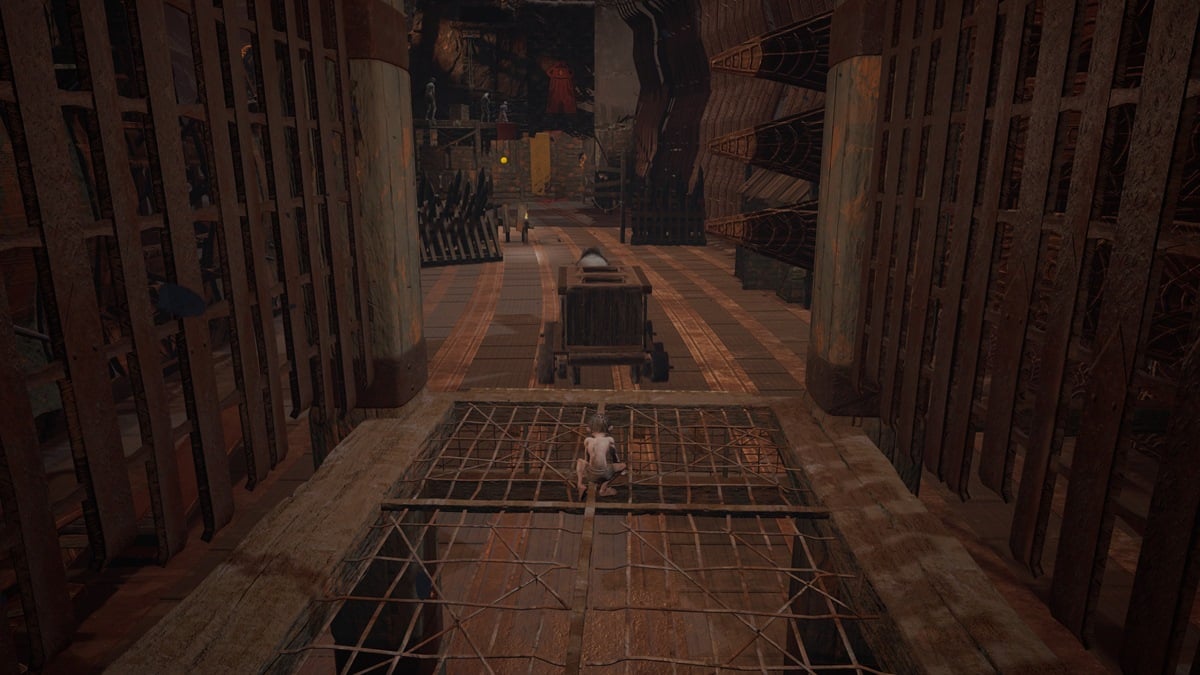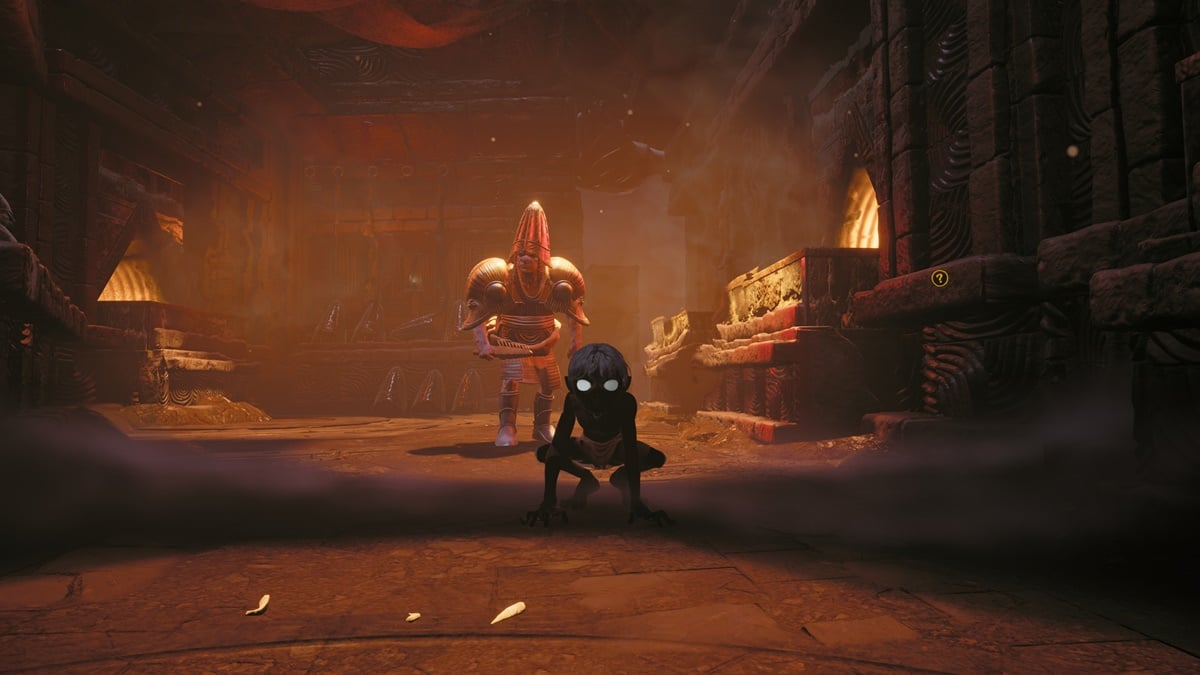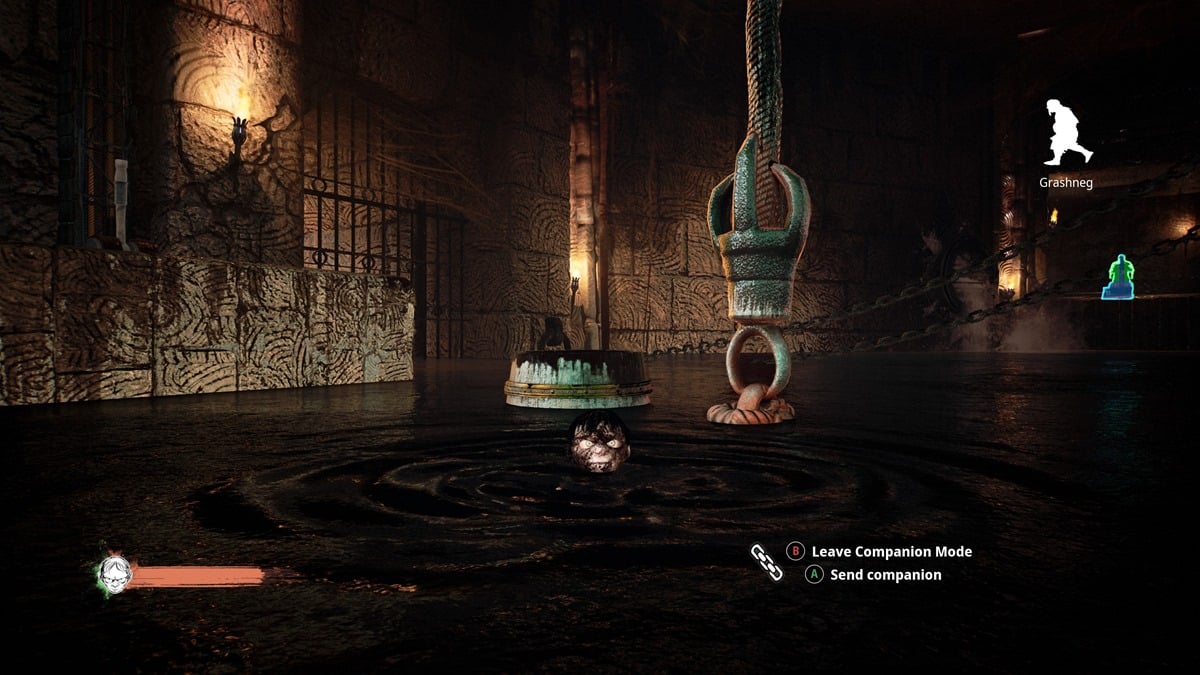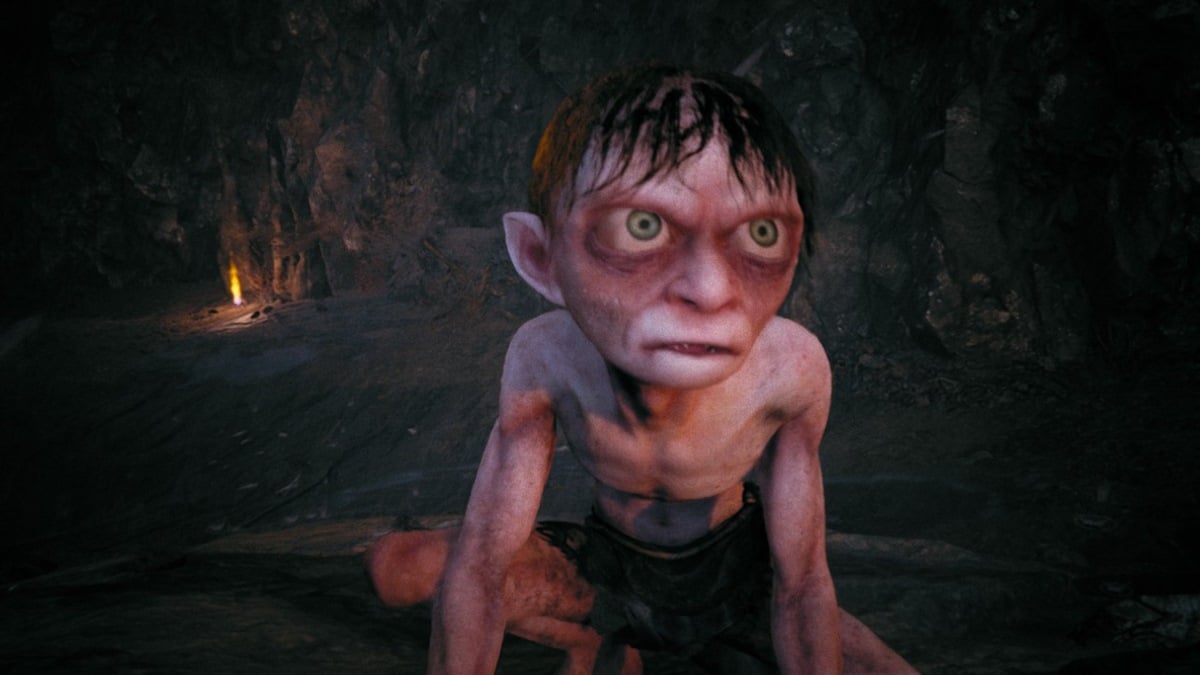I consider myself an average Lord of the Rings fan. From falling in love with the award-winning movie trilogy — Extended Edition, thank you — to somewhat being able to stomach The Hobbit and Rings of Power, I’ve marveled at the spectacle and scope of it all, of what artists have achieved with their vision inside such an expansive world and mythos. And that’s why The Lord of the Rings: Gollum disappointed me.
My excitement for any LotR-related media includes games like Battle for Middle Earth and Shadow of Mordor, too. So, when Gollum was announced, I was totally on board. After all, given that the titular character is one of the most complex and conflicted in the novels and films, I was interested in seeing how his misadventures would translate into video game form. Little did I know I would experience one of the jankiest, buggiest releases in recent memory.
The campaign in The Lord of the Rings: Gollum begins with Smeagol held captive by Thranduil and Gandalf. From there, he recounts his tale, starting with his trek through Mordor. This shows you a younger version of the character, complete with scraggly hair and still reeling from losing the One Ring. From there, it’s time to go on a stealth-adventure romp.
The visuals, at least at this stage in Gollum, caught my eye. There I was, along a cliffside, staring at a moonlit sky that illuminated the rocky crags, all while lightning flashed periodically to illuminate the area. I felt it set the tone for a darker adventure that lay ahead. Then, I started moving around, and the illusion ended.
Gollum doesn’t move fluidly, at least in the build I played for this review. His movements are twitchy and unnatural, with parts flopping around in jerky irregularity. At first, I thought it could be because the character moves on all fours and that, for all intents and purposes, Smeagol is small and gangly. He’s not even a regular-sized Hobbit, much less a regular-sized person.
But then I remembered Stray, which I reviewed for our sister site PC Invasion. There, BlueTwelve Studio, another smaller studio like Gollum’s Daedalic Entertainment, perfected the cat’s movements and animations, creating a natural flowstate that ran through the game from beginning to end. Here, it’s surprising that Gollum, acting much like a cat and having similar platforming elements to Stray, performs so incredibly poorly.

In The Lord of the Rings: Gollum, you’ll be doing plenty of platforming across plenty of jumping sections, chasms, cliffs, and more. A lot of it is similar in design to games like Uncharted and the recent Star Wars Jedi: Survivor, where you’re going from Point A to Point B, clambering onto ledges, swinging from bars, crawling through grates, and generally taking not of objects in the environment.
The other issue I have with the game surfaces here. Unlike those games, Gollum, unfortunately, lacks the charm, engagement, and set-piece moments that would make these instances memorable. In short, it’s as banal as it gets.
The clunky controls don’t help, either. Gollum’s jump is “floaty” with a capital F. It not only looks silly, but it can also kill you. There were plenty of times when I just overshot my landing and fell to my death.
Other inconsistent but key mechanics include wall-climbing, where I’d either move sideways normally or attempt to grab an object that wasn’t there, stopping in my tracks; mantling that turns into unnecessarily frustrating vertical jumps; and wall-running, where I could either instantly sprint forward across a wall or just come to a screeching halt.
Cumbersome controls and clunky movement are compounded by levels or sections where Gollum has to move around quickly in a slow-paced, stealth-based design. I recall a portion where I had to move sideways to dangle off a moving cart while obstacles were arrayed along a road. Even the slightest misstep caused a hitch, as though the button press wasn’t detected. And Gollum would just slide off, forcing me to try again. Another, a Crash Bandicoot-esque chase sequence through a cave, serves as an exercise in frustration, especially when the “float” jump is so inaccurate.

As most Lord of the Rings fans are aware, Gollum is a far cry from the likes of Aragorn, Legolas, or Gimli. He doesn’t charge into battle. Instead, he lurks in the shadows. In that way, it makes sense that The Lord of the Rings: Gollum is a stealth game. It’s just that the stealthing isn’t very good.
The first signs of this are in the game’s presentation. While Gollum may act like a shadow, he too often literally becomes one. If Gollum steps foot in tall grass or dark areas, he turns pitch black. It’s not a power or ability. Rather, it’s just how the game tells you you’re in stealth mode.
Not only is it hard to see Gollum amongst the shadows in the environments, but it also doesn’t need to exist with how brainless the AI is. I could practically walk into the shadow cast by an overhang, and an Orc looking straight in my direction would just go about his business.
Worse, for a stealth adventure game, you don’t really have a lot of options to distract foes when you need to. You can pick up stones, which you can throw at metallic objects, or you can turn off lights. That’s about it. While other titles allow for different approaches to a particular predicament, creating interesting bits of emergent gameplay, The Lord of the Rights: Gollum goes back to the basics — in a bad way.

Puzzles in The Lord of the Rings: Gollum are also a mixed bag. Some are engaging, while others are either drab or downright unintuitive. One example is the Egg Puzzle. The premise is straightforward: turn the egg into a certain color (i.e., black, brown, or white), then place a specific number of logs in the furnace corresponding to the egg color that you used. The hints are drawings in the room, so I naturally made use of them.
Strangely enough, none of the hinted solutions worked. I thought it was bugged at first. Then, with no other recourse left, I just went with trial and error, brute-forcing each “log and color” combination to no avail. After around an hour of trying, I almost gave up. Then, I realized I had to press the furnace’s button prompt several times — and the reason I didn’t notice it initially was because a cutscene kept triggering even after activating the furnace just once, making me think that it was ready to be used.
I absolutely enjoy solving puzzles in games (our recent Zelda: Tears of the Kingdom coverage can attest to my love of brainteasers). Gollum, sadly, tested my patience. A couple of segments later, another puzzle section acts more as an escort mission than a riddle, one where the NPC plods along and you’re forced to plod along with them.
To be fair, Daedalic has a Day One patch coming that may fix some of these issues, but unfortunately, I can only review what I played.
The Lord of the Rings: Gollum Review — The Bottom Line

Pros
- Gollum is chittery and chatty, which befits the character.
- The backstory is an interpretation of the events between The Hobbit and The Lord of the Rings, giving fans a new perspective on the character.
Cons
- Boring and outdated platforming sequences without exciting or memorable set-piece moments.
- Cumbersome and clunky controls coupled with janky animation.
- Ineffective and poorly-designed stealth mechanics
- Puzzles with questionable concepts and ideas.
Lastly, it’s worth mentioning that The Lord of the Rings: Gollum seems to have some performance issues on PC. With an Nvidia RTX 3080, Intel i9-10900K, and 32GB RAM, my rig is well within the game’s recommended specs, according to the LotR: Gollum Steam store page. Still, with the highest settings enabled, including ray tracing, and DLSS Performance, I only averaged 45fps in most locations. It’s a bit sub-optimal, considering that this is far from an open-world game, and, for the most part, the environments themselves aren’t very detailed.
In the end, my experience playing The Lord of the Rings: Gollum was disappointing. A creative take on the character’s journey interested me prior to its release, but the core concepts should also fall in line with what we’ve come to expect from the current generation of games. Outdated and plain bad mechanics simply mean that this title, much like the Balrog, should go back into the shadows.
[Note: Daedalic Entertainment provided the Steam code for The Lord of the Rings: Gollum that was used for this review.]







Published: May 25, 2023 04:00 am